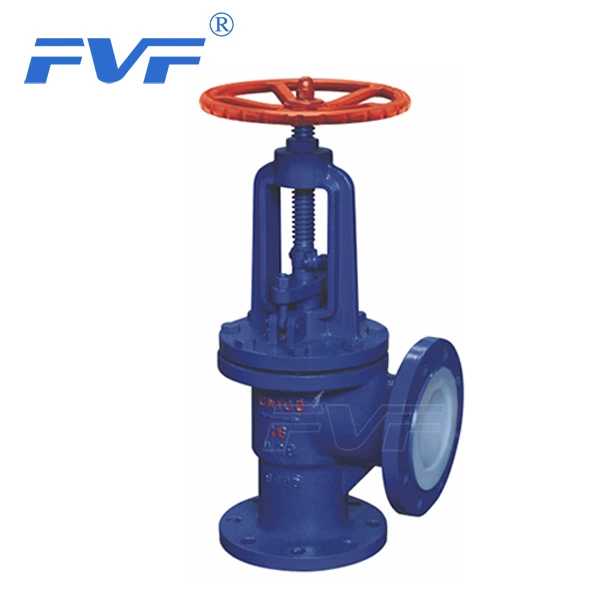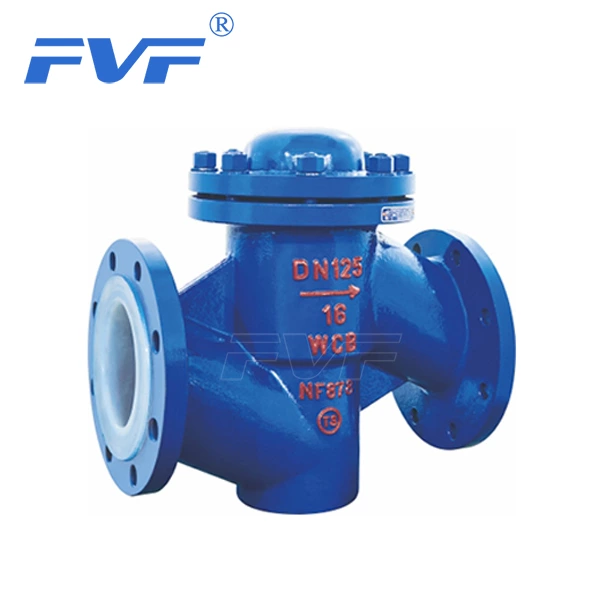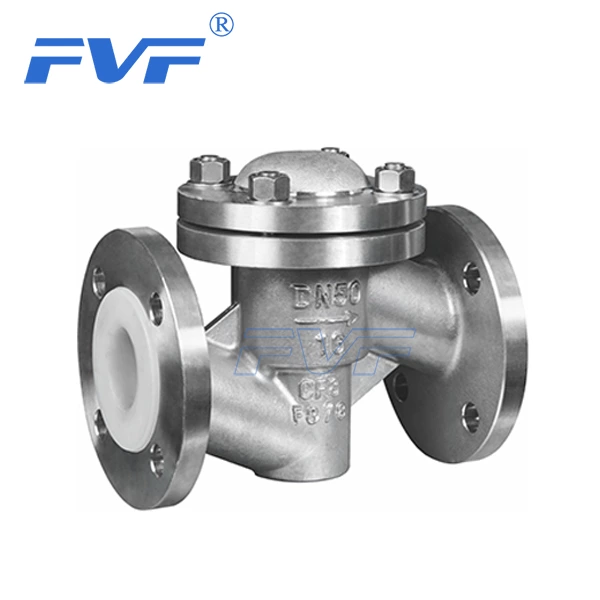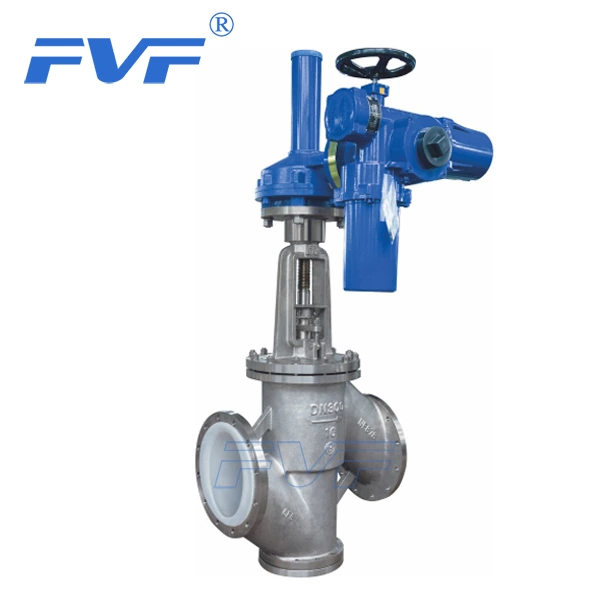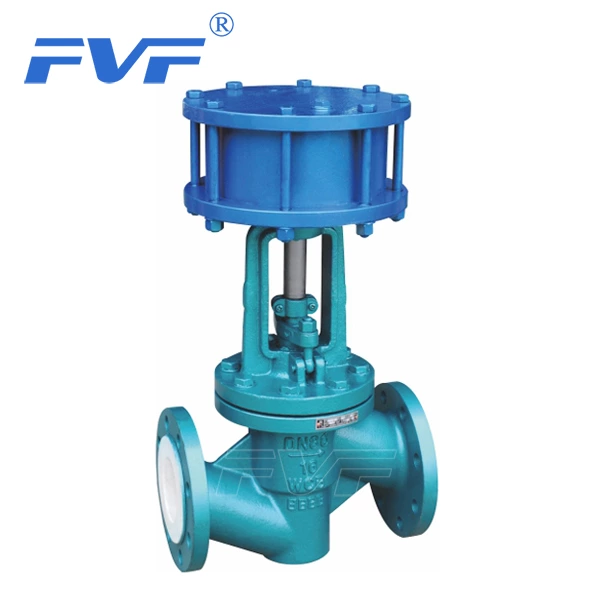Detailed Method Of Installing Valve
The installation quality of Lined Valve will directly affect the use of the valve, so we must pay attention to it.
(I) Direction and position
Many valves have directionality, such as stop valves, throttle valves, pressure reducing valves, etc. If they are installed upside down, it will affect the use effect and life, or it will not work at all, and it may even cause danger. General valves have direction marks on the valve body; if there is no direction mark, it should be correctly identified according to the working principle of the valve.
The valve cavity of the stop valve is asymmetrical on the left and right, and the medium must pass through the valve port from bottom to top, so that the fluid resistance is small (determined by the shape), opening is labor-saving (because the medium pressure is upward), and the medium does not press the packing after closing, which is convenient for maintenance. This is why the stop valve cannot be installed upside down. Other valves also have their own characteristics.
The location of the valve installation must be convenient for operation; even if the installation is temporarily difficult, it is also necessary to consider the long-term work of the operator. It is best that the valve handwheel is 1.2 meters away from the operating floor, so that the valve opening and closing will be more labor-saving. The handwheel of the floor-standing valve should be facing upward and not tilted to avoid awkward operation. Valves against the wall or equipment should also leave room for operators to stand. Avoid operating with your head tilted up, especially when working with acid, alkali, or toxic media, otherwise it is very unsafe.
Do not install the gate valve upside down, otherwise the medium will remain in the valve cover space for a long time, which is easy to corrode the valve stem and is prohibited by certain process requirements. At the same time, it is extremely inconvenient to replace the packing.
Do not install the rising stem gate valve underground, otherwise the exposed valve stem will be corroded due to moisture.
When installing the lifting check valve, ensure that its valve disc is vertical so that it can be lifted and lowered flexibly.
When installing the swing check valve, ensure that its pin shaft is horizontal so that it can swing flexibly.
The pressure reducing valve should be installed upright on the horizontal pipeline and should not be tilted in any direction.
(II) Construction work
The installation must be careful and avoid hitting valves made of brittle materials.
Before installation, the valve should be inspected, the specifications and models should be checked, and whether there is any damage, especially for the valve stem. It should also be rotated a few times to see if it is skewed, because the valve stem is most likely to be skewed during transportation. It is also necessary to remove debris from the valve.
When lifting the valve, the rope should not be tied to the handwheel or valve stem to avoid damaging these parts. It should be tied to the flange.
The pipeline connected to the valve must be cleaned. Compressed air can be used to blow away iron oxide chips, mud, welding slag and other debris. These debris not only easily scratch the sealing surface of the valve, but also large particles of debris can block small valves and make them ineffective.
When installing screw-mouth valves, the sealing packing should be wrapped on the pipe threads and not put into the valve to avoid accumulation in the valve and affect the flow of the medium.
When installing flange valves, pay attention to tightening the bolts symmetrically and evenly. The valve flange and the pipe flange must be parallel and the gap is reasonable to avoid excessive pressure on the valve or even cracking. For brittle materials and valves with low strength, special attention should be paid.
For valves that need to be welded to the pipe, spot welding should be done first, then the closing parts should be fully opened, and then welded.
(III) Protection facilities
Some valves also need external protection, which is heat insulation and cold insulation. Sometimes a heating steam pipeline is added to the insulation layer. What kind of valves should be insulated or cold-insulated depends on production requirements. In principle, if the temperature of the medium in the valve drops too much, it will affect production efficiency or freeze the valve, so it needs to be insulated or even heated; if the valve is exposed, it is not conducive to production or causes adverse phenomena such as frost, it needs to be cold-insulated. Insulation materials include asbestos, slag wool, glass wool, perlite, diatomaceous earth, vermiculite, etc.; cold insulation materials include cork, perlite, foam, plastic, etc.
Water and steam valves that are not used for a long time must be drained of accumulated water.
(IV) Bypass and instrumentation
Some valves, in addition to the necessary protection facilities, also need bypass and instrumentation. Bypass is installed to facilitate the maintenance of steam traps. Other valves also have bypasses installed. Whether to install bypasses depends on the valve condition, importance and production requirements.
(V) Replacement of packing
Some packings of inventory valves are no longer useful, and some are not compatible with the medium used, which requires the replacement of packings.
Valve manufacturers cannot consider the various media used by the unit, and the stuffing box is always filled with ordinary packing, but when using it, the packing must be adapted to the medium.
When replacing the packing, press it in one circle at a time. The joint of each circle is preferably 45 degrees, and the joints between circles are staggered by 180 degrees. The height of the packing should take into account the room for the gland to continue to tighten, and now the gland should be allowed to press the packing chamber to an appropriate depth, which can generally be 10-20% of the total depth of the packing chamber.
For valves with high requirements, the joint angle is 30 degrees. The joints between circles are staggered by 120 degrees.
In addition to the above-mentioned packings, rubber O-rings (natural rubber is resistant to weak alkali below 60 degrees Celsius, nitrile rubber is resistant to oil below 80 degrees Celsius, and fluororubber is resistant to various corrosive media below 150 degrees Celsius), three-piece stacked polytetrafluoroethylene rings (resistant to strong corrosive media below 200 degrees Celsius), nylon bowl rings (resistant to ammonia and alkali below 120 degrees Celsius) and other formed packings can be used according to specific conditions. Wrapping a layer of polytetrafluoroethylene raw tape outside the ordinary asbestos packing can improve the sealing effect and reduce the electrochemical corrosion of the valve stem.
When tightening the packing, turn the valve stem at the same time to keep it even all around and prevent it from being too tight. Tighten the gland evenly and do not tilt it.
